Time to read: 5 min
Foamcore (also known as foam board or foam core) is a lightweight building material typically consisting of an inner foam layer sandwiched by paper or another thin, lightweight material. If you have put together a poster for a school project or a work-related presentation, odds are you’re familiar with rigid foam core poster board. Foamcore is a cheap, easy-to-use material that can quickly create scale models for prototypes.
Read on to learn about applications for foamcore use and tips for building with foamcore.
Main Foamcore Applications
Early user testing
Working with foamcore makes sense for applications where you stand to learn something by placing a model in people’s hands — you can learn a lot by watching users interact with your model. These interactions should be limited due to the fragility of foamcore prototypes versus production models, but they can still provide the look you’re aiming for.
Large models
Foamcore also makes sense with large models. 3D printing is revolutionizing the way prototypes are made, but printing is a relatively slow and expensive process for larger parts.
For example, a simple box with dimensions and complexity similar to a shoe box might cost you a few hundred dollars (USD) for a 3D-printed model. The same prototype could be assembled for just a couple of dollars using foamcore. Using foamcore early in the process allows you to burn through the first couple of iterations in hours while only spending a few dollars.
Foam core is versatile enough also to be utilized in the construction industry. Popular applications include thermal insulation or soundproofing.
Limitations of Using Foamcore
Foamcore is not always advantageous, however, because it won’t work well on small or highly detailed parts (this is where 3D printing or CNC is your best bet).
Additionally, foamcore doesn’t hold up well in adverse environmental conditions.
With these limitations in mind, let’s discuss a few fundamental techniques you should master to build better models with foamcore.
Supplies
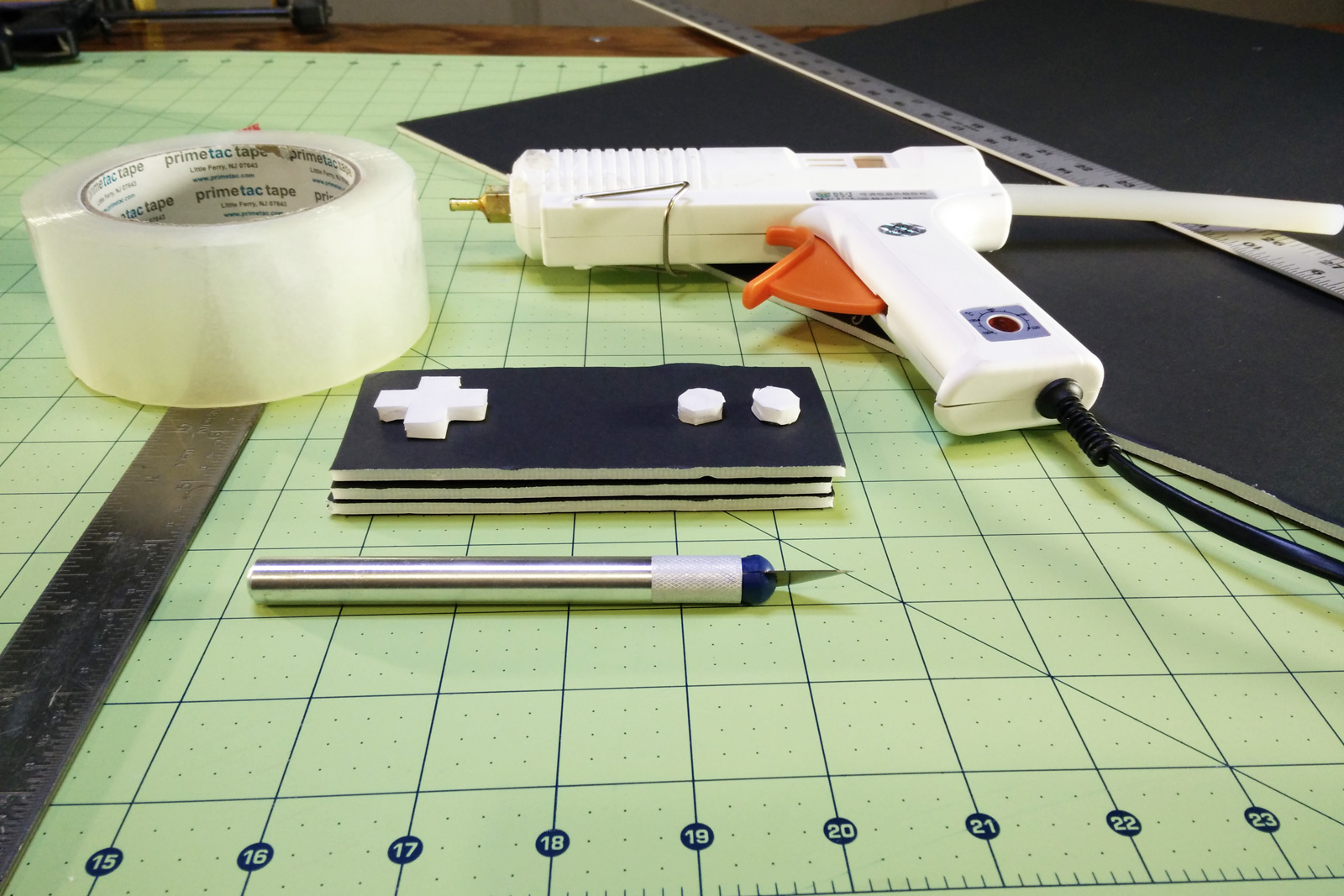
First, these are the supplies I’m using for this guide:
The foamcore used in all the examples pictured is Readi-board, which is manufactured in the US by Adams manufacturing for hobbyists, picnic goers, and even home remodelers. It can be purchased in bulk online, but I picked up my sheets for $1.25 a piece at my local Dollar Tree store. The sheets typically come in a 20” X 30” size and are slightly less than a quarter of an inch thick.
These are the tools I’m using:
- Hot glue gun
- Ruler
- Clear packaging tape
- Pencil
- Exacto knife or box cutter
- Thermal gloves.
That’s all you need!
Also, I recommend using a knife with an easily replaceable blade — a fresh, sharp edge makes the process go much more smoothly — no one wants to battle a dull blade that does more tearing than cutting.
Foamcore Building Techniques
Joining With Hot Glue
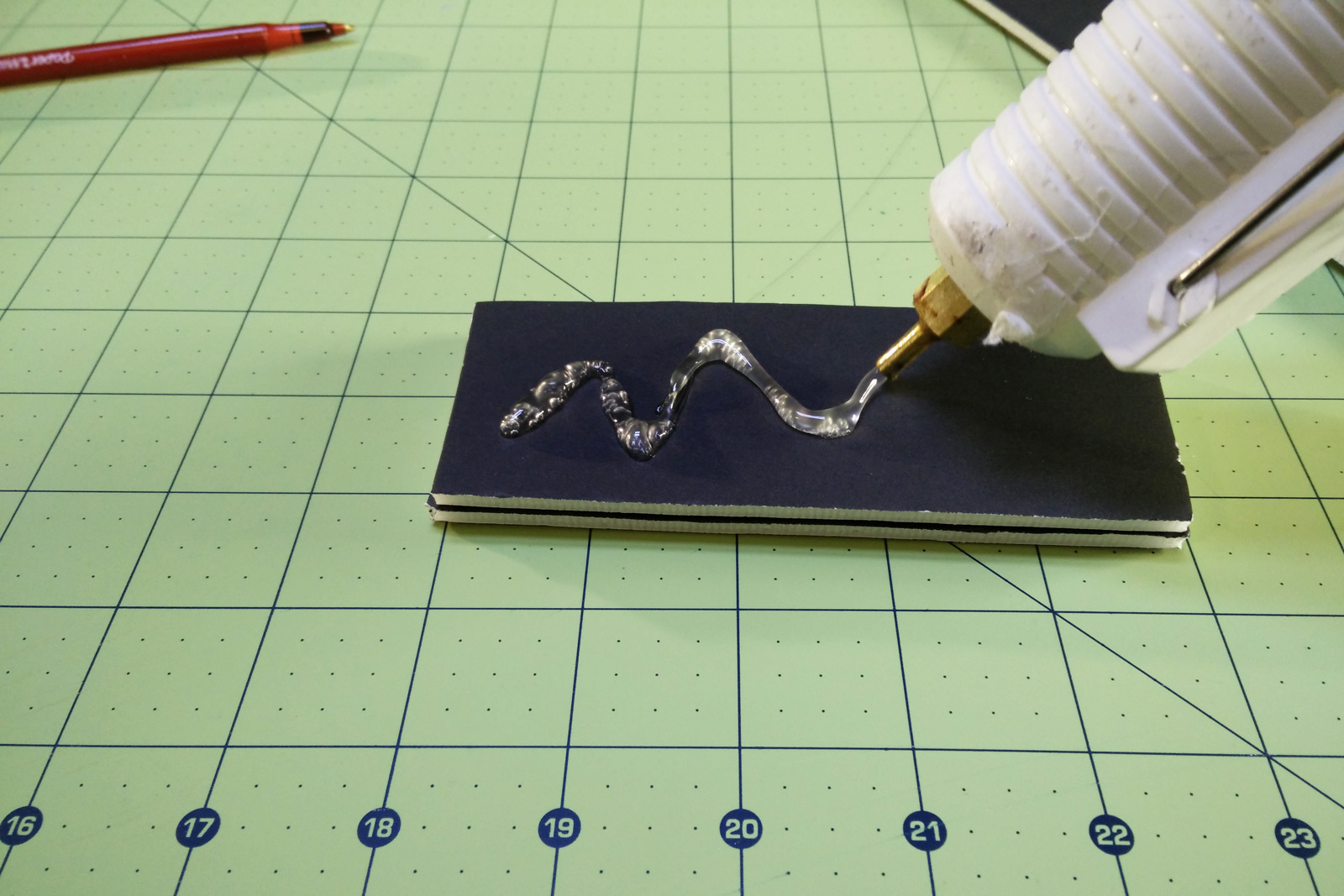
Have you seen those viral 5-minute craft videos where they try to make EVERYTHING out of hot glue? We aren’t going to those extremes, but hot glue is ideal for assembling foamcore prototypes. It’s quick, cheap, and easy to use, much like foamcore.
Glue can join panels together or hold a corner joint closed. Any hot glue gun will do the trick, but if you go with a Dollar Tree model, you’ll do a lot of work.
Instead, splurge on a higher-power glue gun with adjustable temperature settings and around 100 watts of power — then you can put down glue as fast as you can pull the trigger.
Adjustability is critical since it lets you control how long the bond is workable. If you have a long seam, you’ll want more time to fill it, spread the glue evenly, and then maneuver the pieces into position. If you’ve ever crafted before, you know the frustration of glue drying before you can adequately position things.
Clamps are also helpful when doing glue-ups, but anything heavy will most likely get the job done. The technique I use the most often is just to hold the joint in position by hand while waiting for the glue to harden — it’s simple but effective!
Note: Always use caution when handling hot glue guns or cooling glue. Glue out of a glue gun can reach 380 ℉. For reference, you can get third-degree burns from exposure to a liquid at 150℉. So, use protective, heat-resistant gloves when handling hot glue guns.
If you’re looking to model different style corners, there are a few techniques you can use:
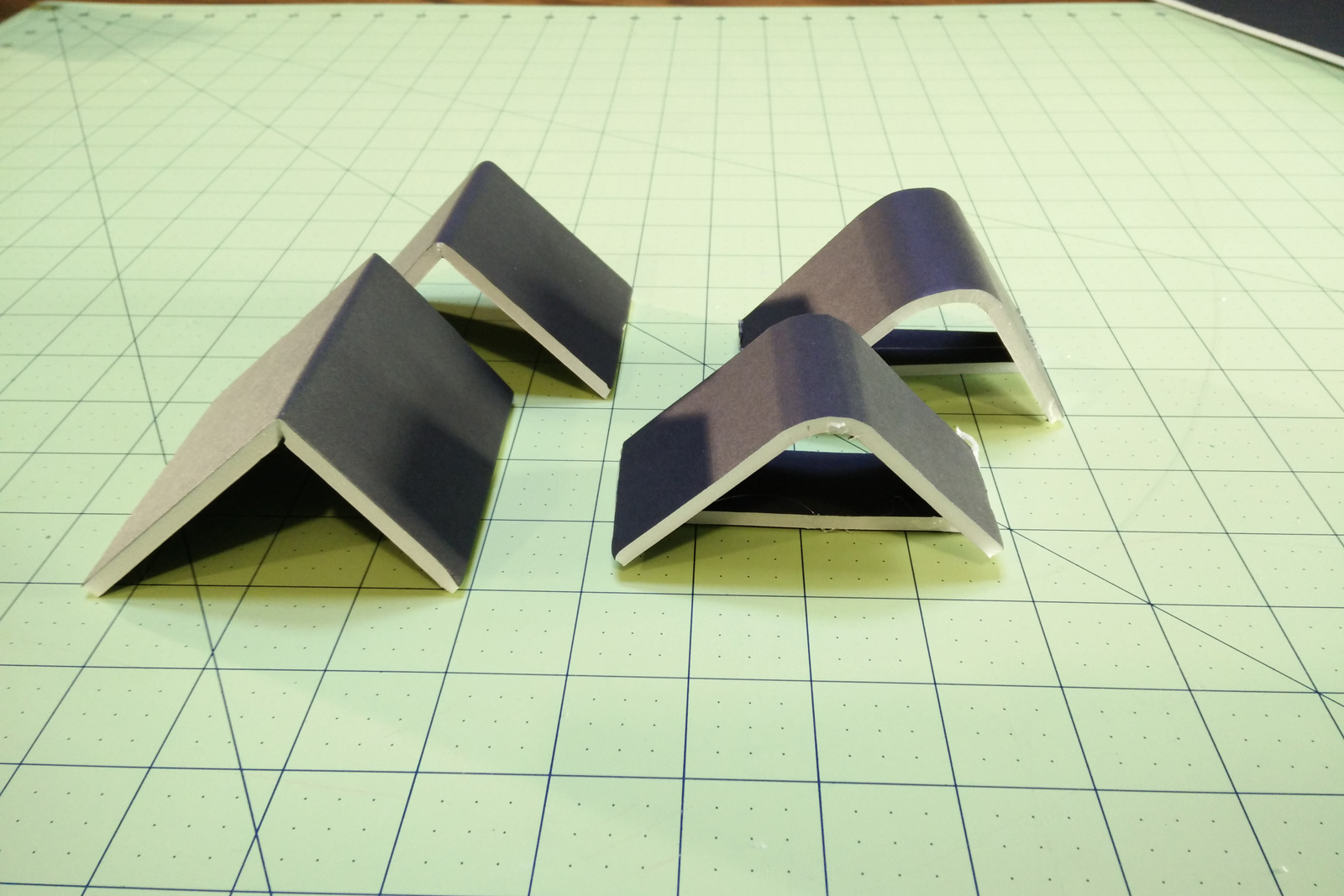
Gentle Corners
You can create soft corners by removing the paper on the backside of the joint and working it into shape by hand (see the example corner in the back right above).
For more control, you can create several small kerfs on the backside. If you adjust the spacing and width of the cut, this will also afford you more control over the uniformity of the corner’s radius (see the front right example above).
Sharp Corners
If you want a tight corner, you have a couple of options:
First, you can remove the material with a chamfer on the back side, which will give you the sharpest corner, as shown in the fr, as seen in the left rear example aboveont left example above. Alternatively, you can score the backside with a blunt object to get a corner.
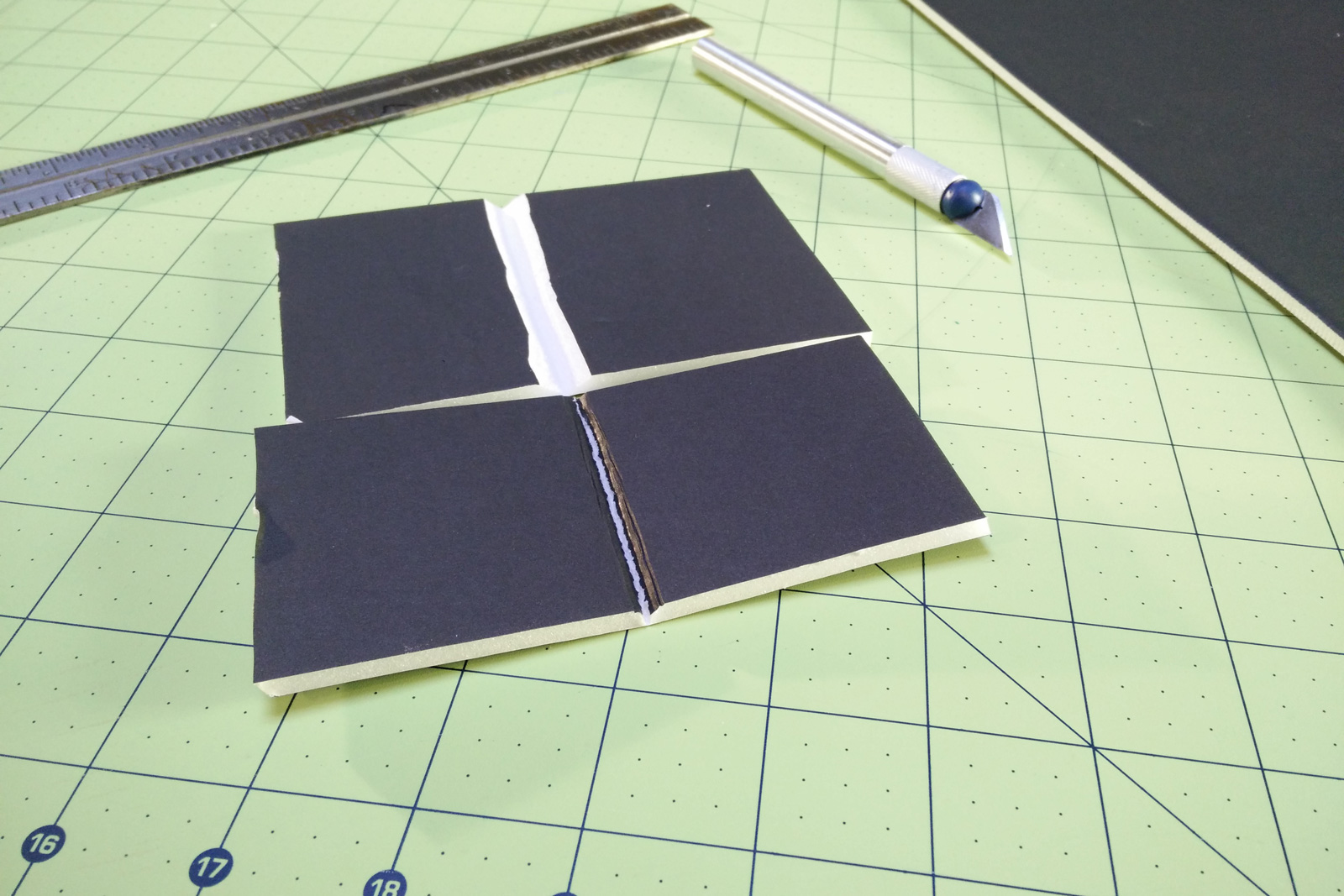
To create a sharp corner cut through the backing paper and the foam to produce a sharp corner, but leave the outside facing paper intact. Then chamfer both sides on the back at 45-degree angles.
Do a test fold of this corner to ensure you’ve removed enough material, and once you’ve done the test fold, open the joint back up and fill it with hot glue, using a scrap piece of foam to help spread the glue evenly across the joint. Presto! You now have a perfect right angle.
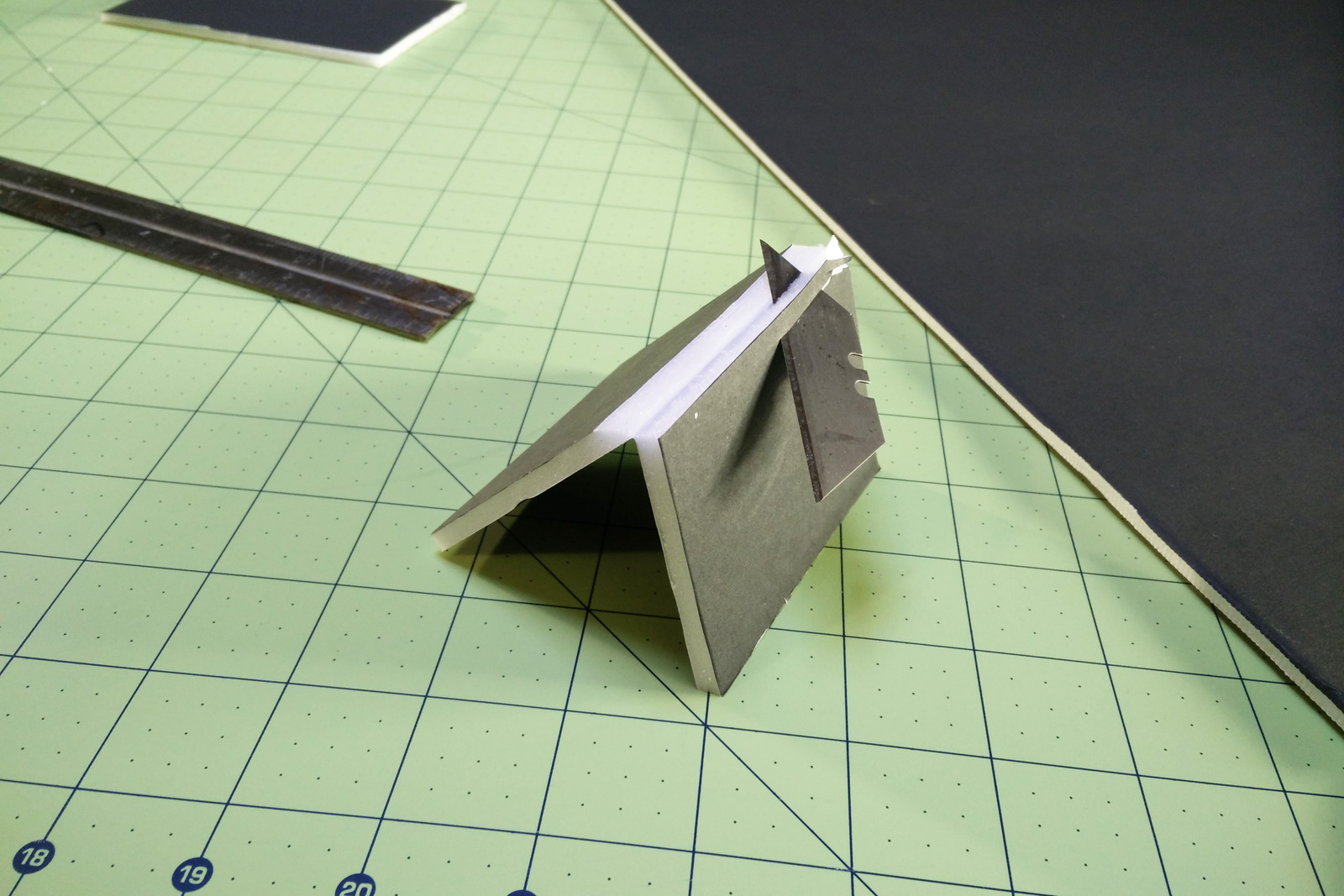
Flexible joints
A flexible or living joint can also be made using a process similar to creating a sharp corner. However, instead of filling the joint with hot glue and leaving it at a 90-degree angle, leaving it open with the outward-facing paper down and reinforcing the backside with thin, clear packaging tape works well here.
If you want to take your foam core work to the next level, there are several advanced tools online. A company named FoamWerks has an impressive lineup of tools that address many of the pain points associated with working with foamcore.
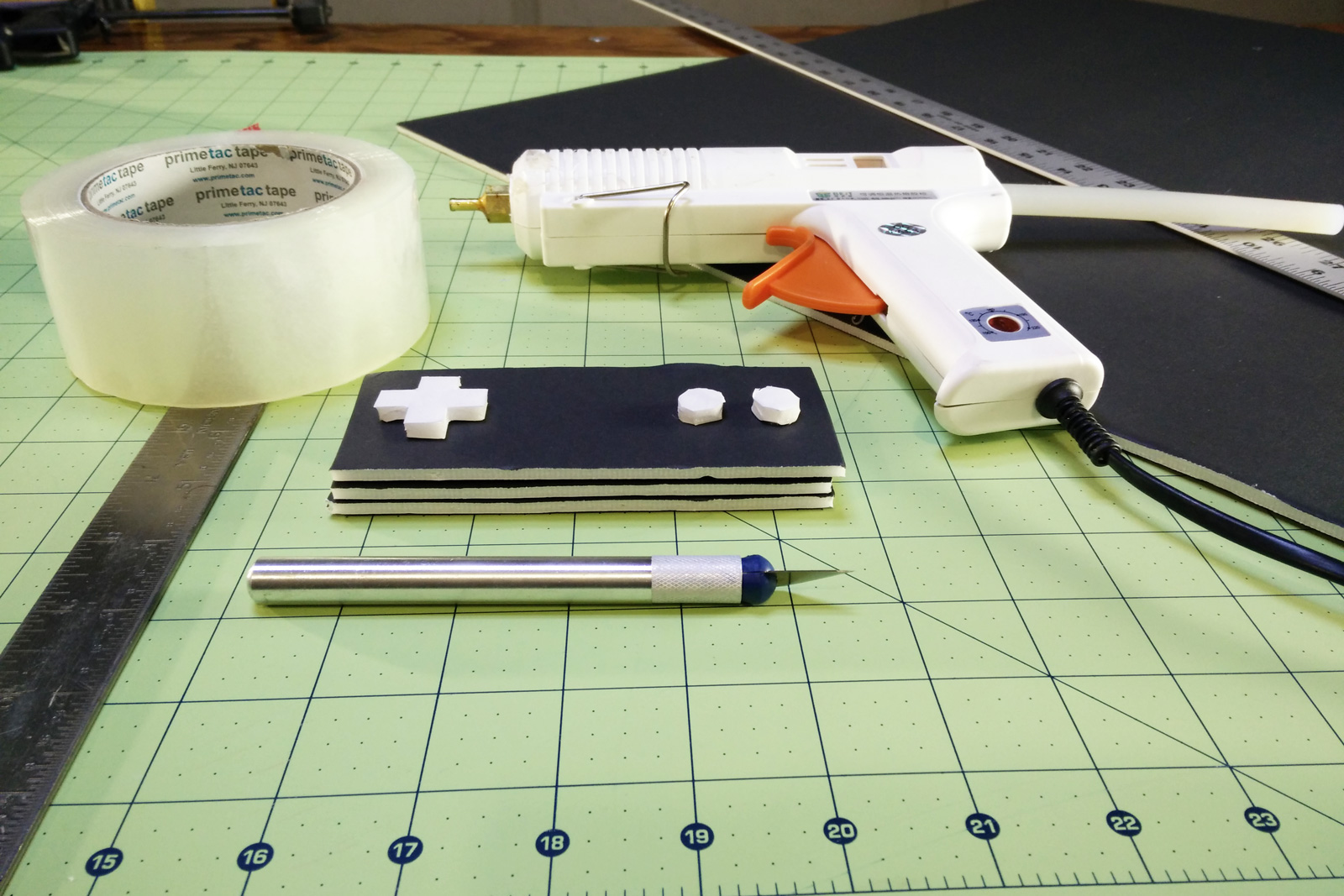
New product development and prototyping are processes with many steps and iterations. By integrating a material like foamcore into the early stages of that process, you can cost-effectively streamline your approach and quickly create a foundation for the following steps.
Fictiv – Your Prototyping Partner
Once you are ready to move on from foamcore prototypes, it’s time to create 3D printed, injection molded or CNC machined prototypes. And depending upon which process you want, Fictiv can bring you prototypes in as fast as a day or two!
Fictiv is your operating system for custom manufacturing that makes part procurement faster, easier, and more efficient. Building something new takes trust and dedication, and our manufacturing experts are here to partner with you to turn your vision into reality.
So create an account and upload your part today, and find out how to accelerate the prototyping process and get you to production fast.










